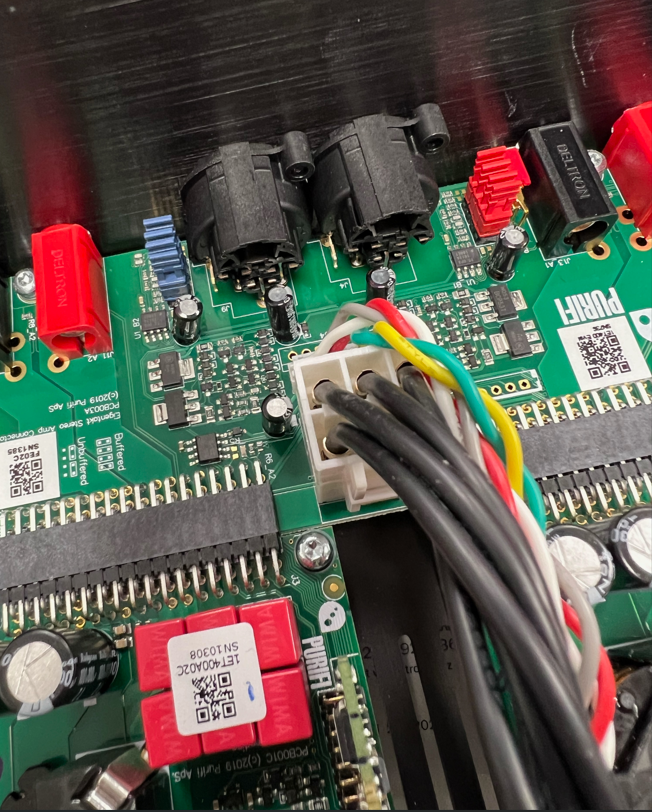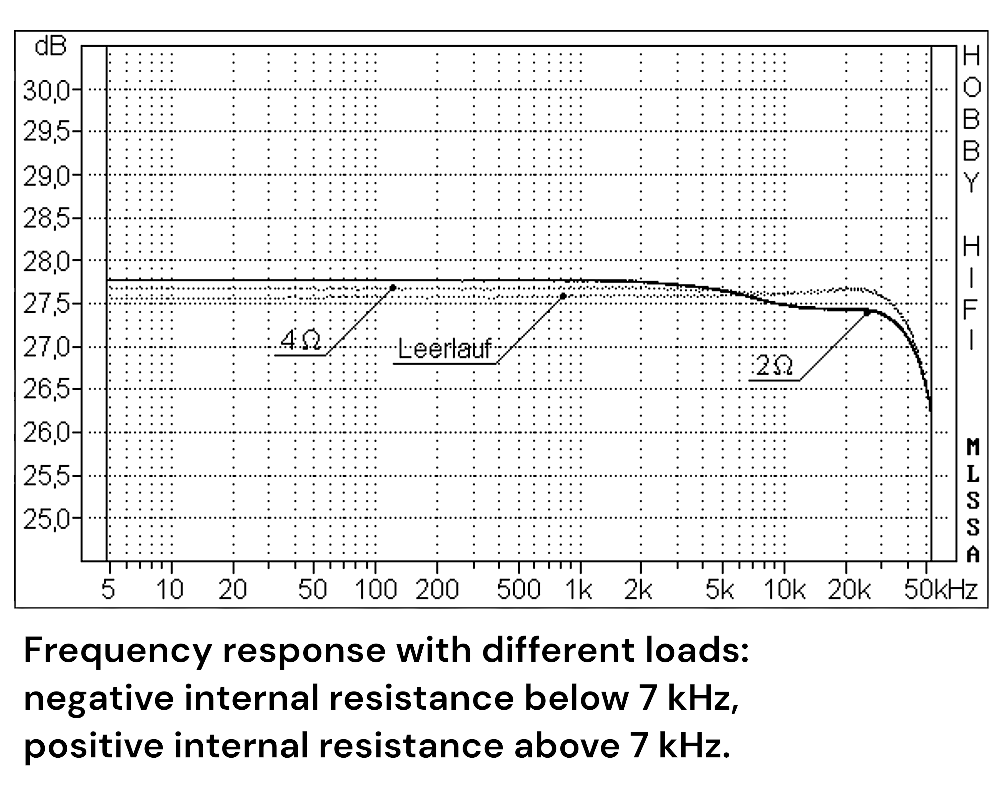Featured: Hobby HiFi Review of the SoundImpress PU400-2CH Stereo Power Amplifier
In this article, we discuss a review from Hobby HiFi, volume 25, issue 2-3/2024, written by Bernd Timmermanns. In this issue, we present some of our biggest loudspeaker projects, equipped with powerful woofers that can effortlessly handle 400 watts. This begs the question: where do you get that power from? SoundImpress' PU400-2CH stereo power amplifier, based on Purifi's advanced EVAL1 module, offers an impressive option here, with unmatched power and precision.
Dänisch electronics specialist Purifi invented and perfected the self-clocking amplifier topology, a special form of class-D power amplifier technology. Purifi developed and supplies a so-called "evaluation board" for industrial customers who want to integrate this technology into their own products. This is a well-known concept among many electronics manufacturers, who use it to offer their customers the opportunity to extensively test - evaluate - their products without having to design and build an amplifier circuit with the offered chips beforehand. These ready-made circuits usually represent state-of-the-art technology - after all, manufacturers have an interest in their customers experiencing the electronic components to be sold in excellent quality.

SoundImpress uses such an evaluation board for their own amplifier kit. Purifi's EVAL1 forms the heart of the PU400-2CH stereo power amplifier. In addition, the kit includes a high-efficiency switching power supply, a stylish all-aluminium enclosure with an eight-millimetre thick front panel and all the necessary connectors, cables and screws. All this is available as a kit for around 1,600 euros or fully assembled - for just 100 euros extra. What a small extra cost! This is because nothing needs to be soldered and all cables and connectors are ready to use. The electronics are simply plugged together and the mechanical parts screwed on. If you know how to use a screwdriver, you can easily do this within an hour. So the hourly rate is quite reasonable.
Opening the housing
Four screws can be seen on the back of the device. However, these are not enough to open the casing. Closer inspection reveals two more small set screws in the lower edge of the front panel. These can be loosened with a 1.5 mm Allen spanner. Do not unscrew them completely, they are so small that they can easily get lost. A few turns are enough to loosen these screws so that the front panel can be removed. Behind it, four more screws emerge, and now the unit can be opened.

The largest electronic module in the amplifier is the switching power supply.The Purifi evaluation board is directly behind it on the rear panel.
Inside, you can see the switching power supply with a high-frequency transformer, heat sink, chokes and four filter capacitors (each 1,000 µF/200 V). A wiring harness leads to the amplifier board, which is located directly at the back of the unit, as the input and output terminals are on the board. These are XLR jacks for balanced signal input (which can also be driven asymmetrically with common adapters) and four-millimetre banana plugs as power outputs. There is also a small toggle switch that lets you choose between continuous on and automatic on (standby). For power supply, there is a three-pole IEC socket and an illuminated rocker switch. The device can therefore be switched off completely.
On the bottom of the unit, just behind the front panel, there is a slide switch marked 2-1-0. Here is a small circuit board with a bright blue operating LED. The front panel has appropriate holes and a plastic lens is mounted on the inside. The switch can be used to adjust the brightness of this LED: off, dimmed or maximum brightness.
Having just this one light on the front panel, next to the SoundImpress logo, and being able to dim or switch it off is stylish. But to turn it on and off every time, you have to reach down and find the on/off switch, located under the plug.

With the two jumper banks (red and blue), the total gain can be changed between 14 and 27 dB.
This is a do-it-yourself device: if you don't mind, you can drill a hole in a suitable place in the front panel, insert a sturdy mains switch and route the mains cable coming from behind to the power board via the new switch. The cable has flat plugs on the socket. If the new main switch has matching flat plugs, simply reconnect the cable and add another cable with flat plugs at both ends to connect the mains input to the switch. Whether to leave the switch on the back in operation or switch it off is a matter of preference and easy to implement - everything is just plugged in.
Secret function
And then there is a secret function: the circuit's gain can be adjusted. In the default setting, it amplifies by 27 dB, but according to the technical data, 14 dB is also possible. But how do you switch this? Enquiries in the Netherlands yielded a solution: there are two sets of four jumpers on the evaluation board, four red and four blue. Switching these will reduce the gain by 13 dB. Tip: this information would really fit well in the manual.
In terms of metering, we experienced solid electronics. With class-D power amplifiers, the influence of load impedance on frequency response is often critical. Not in this case: our measurement shows the frequency response with different loads from two ohms to no load. In this range, the gain changes by only 0.2 dB - below 7 kHz with negative source impedance, i.e. the signal increases as the load impedance decreases. Above 7 kHz there is normal behaviour: positive source impedance, i.e. a decreasing level with decreasing load impedance. Our power measurement confirms the manufacturer's specifications perfectly: over 400 watts at two and four ohms, a good 200 watts at eight ohms. The amp is DC-coupled, the lower cut-off frequency is zero Hertz - even DC voltage is amplified. At the top end, we measured minus 1.5 dB at 52.5 kHz - this is where our measurement range ends.

Sound
There was no shortage of test speakers consuming a decent amount of power: the Orpheus TL in particular can really make a fist of things. We experienced the vibrating and powerful bass of a large church organ in Saint-Saens' Organ Symphony, extremely energetic choral singing of the Bulgarian Voices and the explosive brass attacks of James Morrison in Scream Machine. The SoundImpress power amp has extremely fine resolution, sounds smooth and clear, and remains absolutely quiet when you really let the cow "fly" - just the right performance for speakers with large woofers.
Conclusion
The PU400-2CH offers exactly the amplifier power you need to drive huge speakers to the limit. Thanks to its advanced high-efficiency Class-D circuit technology, even then it remains only lukewarm. Highly recommended!
Bernd Timmermanns is the editor of HOBBY HiFi magazine and the author of this article. With a degree in electrical engineering from the Universität Duisburg-Essen, he has built an extensive career in the world of audio and loudspeaker design. His expertise and passion for audio equipment are reflected in his in-depth reviews and articles.

Bernd Timmermans

 Home audio
Home audio  Audio components
Audio components  Crossover components
Crossover components  Test & measurement
Test & measurement  DIY kits
DIY kits  Accessories
Accessories  New products
New products  Speakers
Speakers Amplifiers
Amplifiers DAC converters
DAC converters DSP modules
DSP modules Turntables
Turntables Streamers
Streamers Woofers
Woofers Tweeters
Tweeters Exciters
Exciters Bass shakers
Bass shakers Plate amplifiers
Plate amplifiers Amplifier modules
Amplifier modules Single board computers
Single board computers Assembled crossovers
Assembled crossovers Printed Circuit Boards (PCB)
Printed Circuit Boards (PCB) Capacitors
Capacitors Resistors
Resistors Coils
Coils Circuit Breakers
Circuit Breakers Crossover tools
Crossover tools Screw terminals
Screw terminals Acoustic measurements
Acoustic measurements Electric measurements
Electric measurements Sound level meters
Sound level meters DIY amplifier kits
DIY amplifier kits DIY component packs
DIY component packs DIY speaker kit
DIY speaker kit DIY subwoofer kits
DIY subwoofer kits DIY bluetooth speaker
DIY bluetooth speaker DIY electronics kits
DIY electronics kits Binding posts
Binding posts Cabinet Hardware
Cabinet Hardware Cables
Cables Connectors
Connectors Speaker cabinets
Speaker cabinets Electromechanics
Electromechanics Power supplies
Power supplies Speaker repair
Speaker repair Workshop & tools
Workshop & tools Amplifier accessories
Amplifier accessories Stands & mounts
Stands & mounts Gift voucher
Gift voucher Books
Books New products
New products









 Speakers
Speakers Amplifiers
Amplifiers DAC converters
DAC converters DSP modules
DSP modules Turntables
Turntables Streamers
Streamers Woofers
Woofers Tweeters
Tweeters Exciters
Exciters Bass shakers
Bass shakers Plate amplifiers
Plate amplifiers Amplifier modules
Amplifier modules Single board computers
Single board computers Assembled crossovers
Assembled crossovers Printed Circuit Boards (PCB)
Printed Circuit Boards (PCB) Capacitors
Capacitors Resistors
Resistors Coils
Coils Circuit Breakers
Circuit Breakers Crossover tools
Crossover tools Screw terminals
Screw terminals Acoustic measurements
Acoustic measurements Electric measurements
Electric measurements Sound level meters
Sound level meters DIY amplifier kits
DIY amplifier kits DIY component packs
DIY component packs DIY speaker kit
DIY speaker kit DIY subwoofer kits
DIY subwoofer kits DIY bluetooth speaker
DIY bluetooth speaker DIY electronics kits
DIY electronics kits Binding posts
Binding posts Cabinet Hardware
Cabinet Hardware Cables
Cables Connectors
Connectors Speaker cabinets
Speaker cabinets Electromechanics
Electromechanics Power supplies
Power supplies Speaker repair
Speaker repair Workshop & tools
Workshop & tools Amplifier accessories
Amplifier accessories Stands & mounts
Stands & mounts Gift voucher
Gift voucher Books
Books New products
New products





